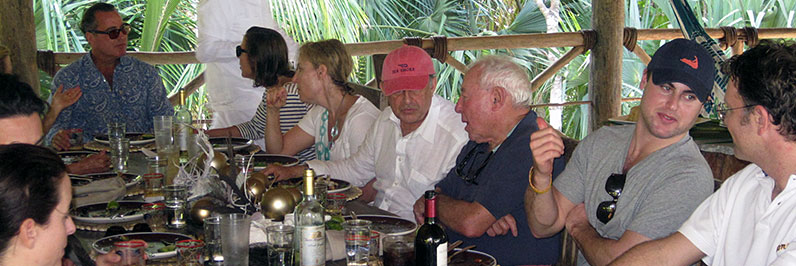SAMPLE PROCESS AGENDA FOR TEAM OFF-SITES
2-3 day Leadership Team Intensive
Pre-work:
Each participant identifies perceived team goals and issues and shares them with everyone. (When the issues are “on the table” it seems easier to get people to engage in the important discussions.)
- Identify individual and team goals/ Identify “extreme competitive advantages”
- Identify the three top “hot issues” ( barriers) that could impact getting to the goals
- Rate the best and worst of each teammate
| Possible off-site Elements: | ||
| 1. Shift the Context: “get the ego out of the room” | (2-3 hours) | |
| • Communication exercises, stories, or physical team experience | ||
| 2. Identify and focus on the most important goals | (1 hour) | |
| • Process to collect and then reduce the goal list to 3 goals | ||
| • Facilitator helps remove redundancy and red herrings | ||
| 3. Surface & prioritize all of the barriers to achieving the key goals | (1 hour) | |
| 4. Guide teams to develop specific solutions for a major challenge identified | (2 hours) | |
| • Facilitated experience of effective collaborative and authentic behaviors | ||
| • Each team prepares and presents their plans | ||
| 5. Help work teams develop detailed plans | (2-3 hours) | |
| • Each sub-group prepares solutions to share with the group | ||
| • Plans are reduced and whole team works together on the team plan | ||
| 6. Individual purpose and motivation alignment | (2 hours) | |
| 7. Individual personal plans and coaching | (3 hours) | |
| • Each individual develops and presents his personal development plan | ||
| 8. Set-up progress accountability | (1 hour) | |
| 9. Specific team behavior shifting exercises (when appropriate) | (1-3 hours each) | |
| • Work/life integration | ||
| • Difficult conversations | ||
| • Appropriate risk taking | ||
| 10. Reflections and learning | (1 hour) | |
| Post event follow-up: | ||
| • Ongoing calls or structured meetings | ||
Outcomes frequently impacted by Snider Associates Work
There are five core competency areas that will determine competitive advantage and define the top performing organizations in the future.
- CHANGE:Ability to adapt to changing environments and needs.
- Collect and Identify relevant environmental change
- Ability to share and communicate new knowledge and practices
- Structural flexibility to shift behaviors appropriately
- CONNECTION:Ability to make people feel connected with others they care about in meaningful work or interaction.
- Community
- Collaboration
- Customer Connected
- CONTEXT: Ability to address reality and reflect desirable values and meaningful intent.
- Value and Goal Focus
- Leadership that focuses energy on values and goals
- Culture that creates meaning inside and outside the organization
- Performance measurement
- CONTINUOUS LEARNING:Ability to support individuals and teams to learn and grow.
- Mechanism to enable timely and appropriate personal growth
- Rapid skill update capability
- Methods to address growth barriers
- COMMITMENT: Ability to maintain purposeful direction despite setbacks.

